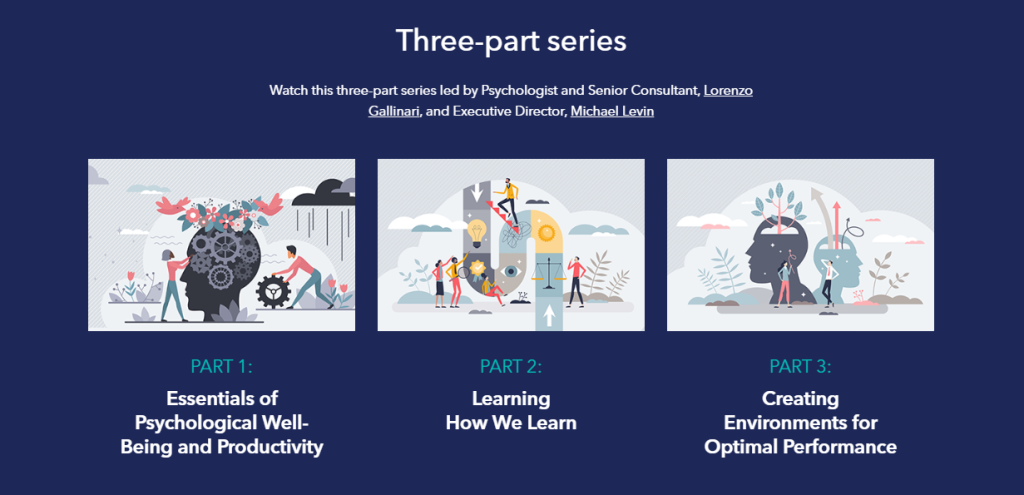The psychology of culture change: how organizations transform from within
Leaders can drive meaningful change by fostering psychological safety, crafting compelling narratives, and aligning culture with business goals.



Leaders can drive meaningful change by fostering psychological safety, crafting compelling narratives, and aligning culture with business goals.
Cultural transformation isn’t about quick fixes—it’s about reshaping mindsets, behaviors, and decision-making. Grounded in psychology, this article by clinical and organizational psychologist Lorenzo Gallinari explores how leaders can drive meaningful change by fostering psychological safety, crafting compelling narratives, and aligning culture with business goals.
Cultural change within organizations is often seen as nebulous. For senior leaders and decision-makers, it’s one of the most crucial levers for long-term success. Culture defines how an organization functions, how decisions are made, and ultimately, how competitive it remains in a rapidly evolving business landscape. This paper seeks to engage senior managers in a reflective conversation about cultural change—not as a superficial initiative but as a core driver of organizational survival and growth.
Culture, like an individual’s character, shapes an organization’s behaviors, values, and beliefs. It is always present, influencing how challenges are approached, decisions made, and opportunities evaluated. This omnipresence makes culture a fundamental driver of performance, determining not just what actions are taken but how individuals and teams approach their work, collaboration, and innovation.
For example, in the aviation industry, a culture of excellence in safety fundamentally shapes how employees approach their responsibilities. Pilots, engineers, and ground employees operate within a framework where meticulous adherence to protocols, continuous learning, and error reporting are not only encouraged but mandated. This cultural commitment to safety ensures that every decision, from routine maintenance to emergency response, prioritizes risk mitigation and operational excellence.
However, culture doesn’t change overnight or through isolated initiatives. Transformation requires deliberate effort, long-term commitment, and alignment with strategic objectives.
As a psychologist, I understand that behavioral patterns do not transform merely through new policies, nor can they be reshaped by mandates or pressure to perform. True cultural change requires deeper, more meaningful engagement.
Despite the compelling rationale for cultural change, resistance can still occur. While senior leadership often grasps its strategic necessity, other layers of the organization frequently perceive it as an abstract or idealistic pursuit with little practical relevance. Yet, it is these very layers that will either resist or drive the transformation. Failing to recognize the urgency of cultural change can lead to stagnation, inefficiencies, and a gradual loss of competitive edge. Moreover, overlooking the critical need to clearly communicate and embed the “why” of change across the broader organization can fuel both implicit and explicit resistance. To ensure culture evolves in alignment with business goals, leaders must address not only the psychological and structural barriers but also foster widespread understanding and ownership of the transformation.
Key strategies to overcome resistance include:
A successful transformation requires not just communication but also meaningful engagement at every level. Leaders should implement a strategic, multi-layered approach that cascades the message effectively, empowering middle management as key enablers and creating networks of cultural ambassadors who can champion the change organically within their teams.
Just as with personal transformation, organizational change is far less painful—and resistance significantly weaker—when it unfolds in a psychologically safe environment. Change inherently triggers heightened levels of stress, uncertainty, and anxiety among employees, making psychological safety a fundamental pillar of any transformation effort. People must feel secure in voicing concerns, asking questions, and experimenting with new ways of working without fear of judgment or negative consequences. Leaders and managers play a crucial role in fostering this environment by demonstrating empathy, encouraging open dialogue, and reinforcing trust throughout the process.
However, a new cultural narrative will not take root unless it is reflected in tangible shifts in how success is measured. Organizations must ensure that key performance indicators (KPIs), evaluation criteria, and incentive structures are aligned with the desired cultural transformation. When employees see that the new expectations are not just aspirational but directly tied to performance assessment, recognition, and career progression, they are far more likely to internalize and sustain the change.
Lastly, equipping managers with a deeper understanding of human behavior is essential to avoid common mistakes that could unintentionally slow down or derail the transformation. Change is as much a psychological process as it is an operational one, and leaders at all levels must be trained to recognize the emotional and cognitive dynamics at play within their teams.
By developing their ability to navigate resistance, manage uncertainty, and support their employees through transition, managers become active facilitators of change rather than unintentional obstacles. When these elements—strategic engagement, psychological safety, aligned performance metrics, and leadership capability—are combined, cultural transformation becomes not just a directive but a lived, sustainable evolution.
If you’d like to explore this topic in greater depth, you might find value in our three-part webinar series, The Psychology of Mental Health and Performance. Register for on-demand access to the recordings.

Change starts here. Let’s talk about how JMJ can help solve your safety and performance challenges.